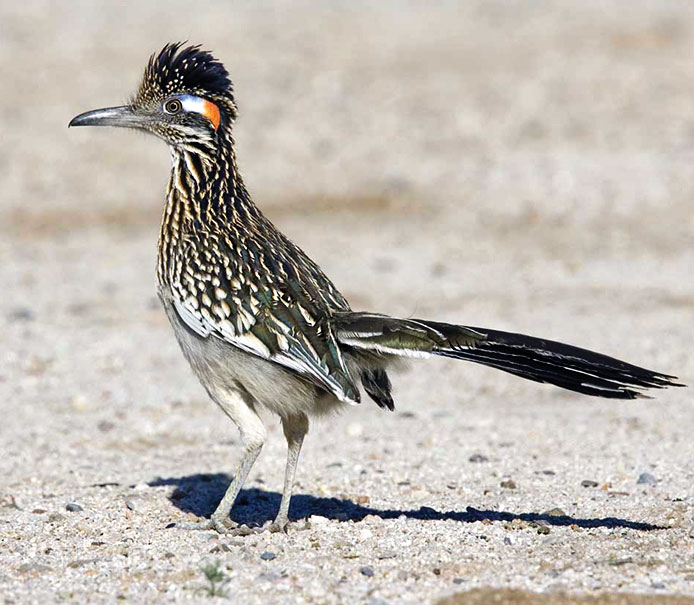 The Sonoran Desert Roadrunner
The Sonoran Desert Roadrunner
Linda Bolon
When one thinks of the Sonoran Desert the Roadrunner perhaps comes to mind. Americans grew up thinking of a cartoon character who cried “beep beep” as it sped away from another Sonoran Desert animal, Wiley Coyote. It gained its name from the habit of running toward cars.
In reality, the Roadrunner is our largest cuckoo, characterized by a long tail, streaked appearance, frequently erected shaggy crest and a blue and orange bare patch of skin behind the eyes. They are large, slender ground-dwelling birds measuring 18 to 24 inches from tail to beak and weighing 8 to 24 ounces. The Roadrunner is a zygodactyl bird; which means it has two toes pointing forward and two toes backward.
Although it can fly it rarely does. They appear to be unafraid of humans and may at times come close. It will lower its mop of a shaggy crest, flipping its long tail about expressively. The roadrunner can reach speeds up to 15 mph when in pursuit of prey.
The Roadrunner is a very effective predator. It captures not only snakes and large insects, but also fast-running lizards, rodents and various small birds. Gambel’s Quail may pay scant attention to the Roadrunner at most seasons, but they react to it violently when they have small young, and with good reason: given an opportunity, the Roadrunner will streak in to grab a bite-sized baby quail.
The male and female mate for life. Temperature and food availability are key factors to breeding season. The males collect nest materials and the female builds the nest. The nest is typically made on a low tree or cactus; the female can lay three to ten white eggs. The Roadrunner may have up to two clutches per year. Because the female’s body temperature drops at night, the male incubates the eggs. After 20 days, the chicks hatch to the care of both parents. After 18 days the chicks are ready to leave the nest. Roadrunners have a lifespan of approximately eight years.
The Roadrunner is the official state bird of New Mexico and is also known as “The Chaparral Bird.”
